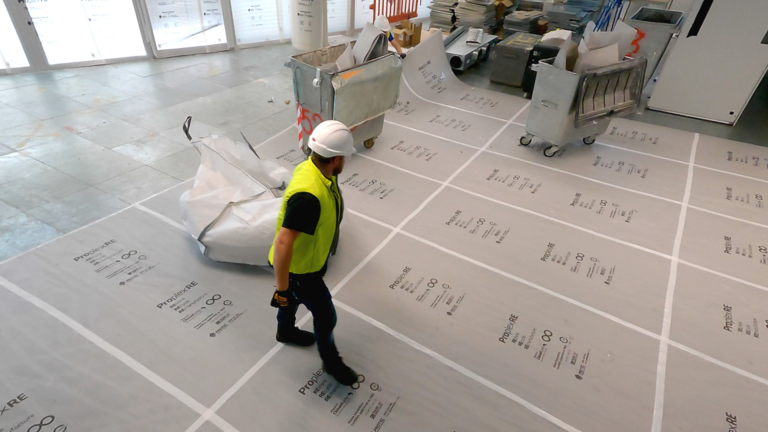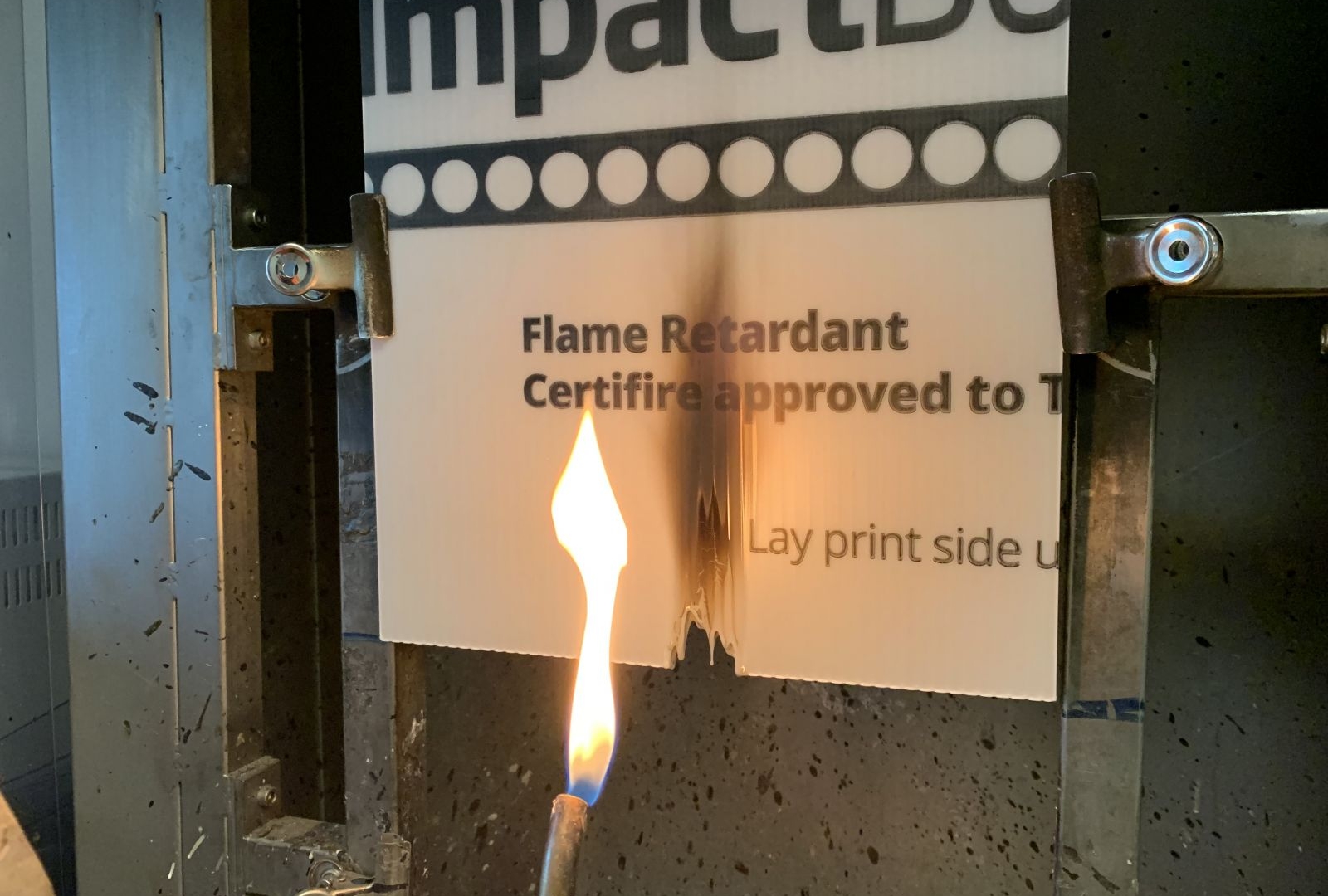Your basket is currently empty!


Each year, hundreds of fires on construction sites and building refurbishment projects cause a huge amount of damage and endanger lives. Fortunately, many of these incidents are preventable.
Fires can spread quickly across a site, destroying finished work, ruin historic buildings, delay projects indefinitely, injure workers, or even kill. However, using flame retardant materials from the start greatly reduces this risk.
In order to help prevent fire disasters, guidelines were established to make construction and building sites safer. This is known as Fire Prevention On Construction Sites: The Joint Code Of Practice (9th Edition).
This code requires protective materials to be flame retardant and follow strict fire safety standards. It outlines compliance with LPS 1207, LPS 1215, or Certifire.
In 1992, two major construction site fires caused over £150 million in losses. Insurers began to question whether it was economically viable to continue to supply insurance cover for construction projects.
The fire protection association worked with the Chief Fire Officers’ Association, London Fire Brigade and the Association of British Insurers (ABI) to publish this code.
Now in its 9th edition, this code helps maintain insurance coverage and improves the management of fire risks across the construction industry.
Simply put, it’s to prevent fires on construction sites. It eliminates bad practice, safety infractions and the use of safe, compliant materials.
Insurers use the code to ensure they can effectively cover construction projects, with the knowledge that contractors have done everything possible to mitigate the risks of fire.
This is done by promoting safe working practice, and encouraging adequate detection and prevention measures are put into every stage of a project.
The code applies to UK construction projects valued at £2.5 million or higher. It also applies if small value contracts form part of a £20 million project.
It covers all activities during the procurement, construction and design process until the structure is completed. It must align HS (G) 168:g and other laws.
All parties in the supply chain must adhere to the code, including those specifying, designing and contracted to work on-site.
It’s always best to check with your insurance provider to see if the Code applies to your project, as thresholds may be reduced for high fire risk sites.
Remember, the Code also serves as best practice – so even if it doesn’t formally apply it’s always best to follow to reduce the risk of fire.
The 9th edition states that temporary protective coverings materials must have LPS 1207 or LPS 1215 Certification in order to comply with the Code.
“Where flexible protective covering materials are used, these must conform to the requirements of the LPCB’s Loss Prevention Standard LPS 1207: Fire requirements for protective covering materials (ref. 13) or equivalent standard (for example, ref. 14). The materials shall be manufactured in accordance with a quality assurance and certification programme, and the manufacturer shall be certified by a third-party approval body accredited by the United Kingdom Accreditation Service. The relevant approval mark shall be printed on the material.”
“When flexible materials are used to clad scaffolding, these materials must conform to the requirements of LPS 1215: Flammability requirements and tests for LPCB approval of scaffolding materials (ref. 15) or equivalent standard (for example, ref. 16). The material shall be manufactured in accordance with a quality assurance and certification programme, and the manufacturer shall be certified by a third-party approval body accredited by the United Kingdom Accreditation Service. The relevant approval mark shall be printed on the material.”
NOTE: The company who is responsible for the insurance of the project is also responsible for compliance with the code, even if a subcontractor is providing the temporary covering materials.
Any product which is flame retardant and meets with the Loss Prevention Certification Board’s (LPCB) standards is given LPS 1207 certification.
If your project follows The Joint Code of Practice, all the temporary protection materials, and anything else you use on-site, needs to have LPS 1207 certification, or your insurance may be void.
Materials that meet flame retardant criteria must be printed with the relevant approval mark together with the manufacturer’s certificate number as illustrated in the examples below:
Many of Protec’s products are LPCB or Certifire approved. Some examples include: ImpactBoardFR, FR Polythene, and Flame Retardant Door Jamb Protectors.
Browse our range of FR certified products here.
For smaller contractors, the Code serves as a best practice guide. Not following it means you are placing your project at increasing risk of fire and project disruption.
Projects that legally require compliance, failure to meet the code is likely to be a breach of your insurance coverage and possibly the construction contract.
Protec offers the largest range of LPCB and Certifire approved Flame Retardant products for internal and external temporary protection.
Each product clearly indicated with the relevant certification and approval mark.
Online documents:
The Loss Prevention Standard LPS1207
The Loss Prevention Standard LPS1215
Websites:
RedBook Live News
Warrington Certification
Share